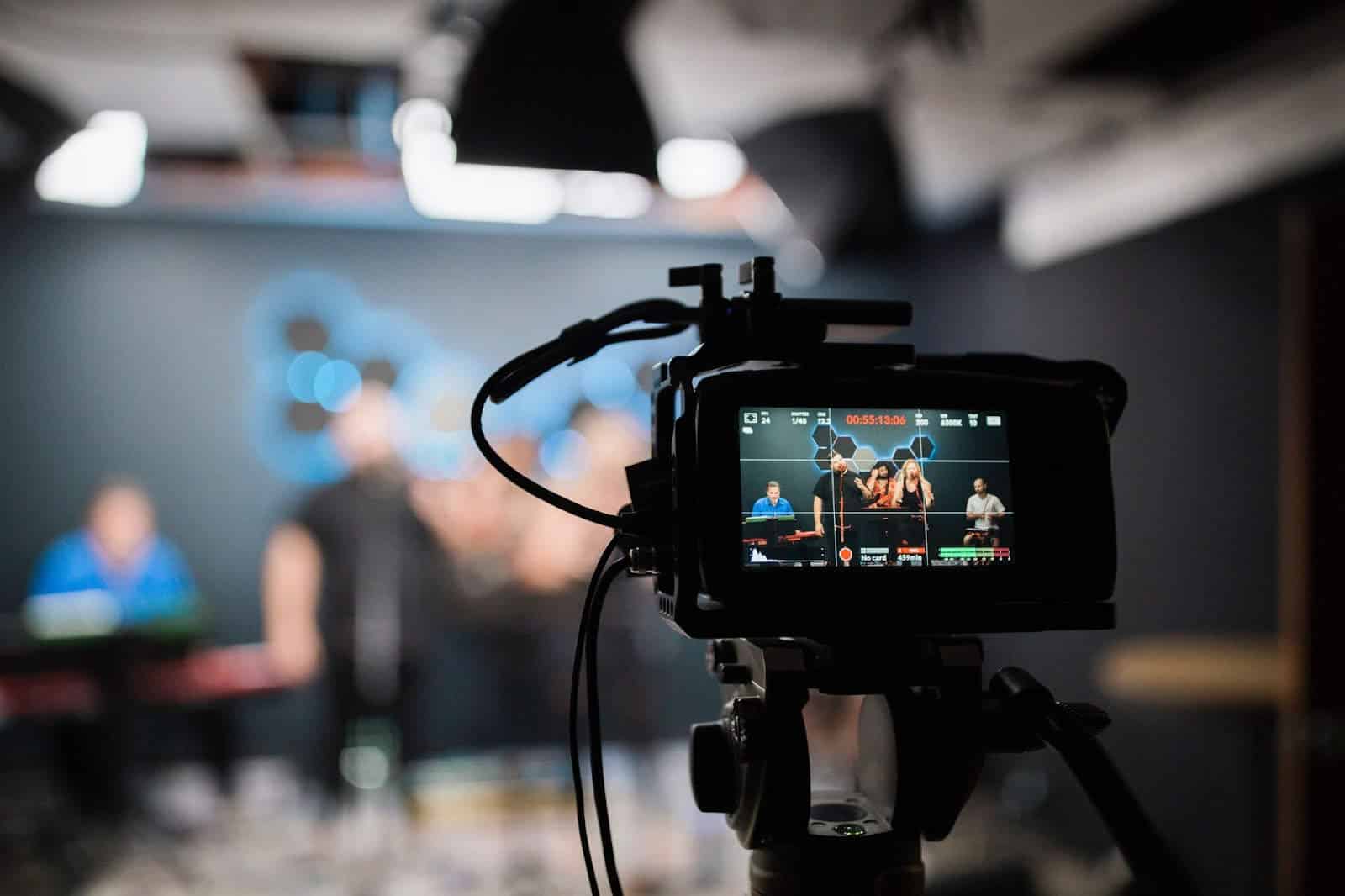People once viewed closed captions as only an aid for individuals with disabilities. Certainly, people who are Deaf and hard of hearing often use captions and rely on them when viewing video content. The ability to turn on the CC feature helped these select individuals consume media content effectively. Now, a wide range of audiences expect to be able to turn on captions and use them for diverse reasons.
The reasons to ensure captions range from safety to convenience. For instance, broadcast captioning ensures the ability to extend emergency alerts effectively to individuals who are deaf or hard of hearing. However, they also serve as a proven method to engage audiences and meet their unique needs for content consumption. Captions also prove to be especially helpful for live programming, such as news, sports and event coverage. Additionally, there are laws and regulations that dictate the need for this feature, so it’s wise to take the time to understand the best ways to offer captions.
Table of contents:
- What is broadcast captioning?
- The importance of broadcast captioning
- Types of broadcast captions
- Options for broadcast captioning services
- Enlisting AI technology for captions

What is broadcast captioning?
Broadcast captioning refers to the instant translation of the spoken word that is then encoded into a television signal or viewed on a monitor at a meeting or convention. Broadcast captioning makes video accessible and provides a time-to-text method to provide a substitute for the audio.
Captions differ from subtitles, although people often use the two terms interchangeably. However, captions address the needs viewers who cannot hear due to physical or spatial limitations. Subtitles, in contrast, supports viewers who don’t speak the native language. For instance, if an English-speaking viewer is watching a movie in French, they may use English subtitles.
For this reason, subtitles don’t include sounds unless they are part of the narration or dialogue. If a viewer who cannot hear watches with subtitles instead of captions, they can miss out on important contextual information. A creaking door in a suspenseful scene of a scary movie, a barking dog, or the sound shattering glass all may add context.
Broadcast captions include all of these non-speech elements. Additionally, they offer features such as speaker identification and sound effects to help viewers further understand what is occurring in the video. The CC icon typically displays to represent captions within most video players. Now that so many people use captions, adding captions is fairly simple and straightforward.
The importance of broadcast captioning
Approximately 466 million individuals worldwide have disabling hearing loss, and 34 million of these are children. These numbers are only expected to grow, with estimates of hearing loss projected to affect 900 million people by 2050, according to WHO.
Providing captions isn’t only the right thing to do to create an equitable means for individuals with disabilities to consume news and live programming. Captions are also an accommodation that is required by law. Described and Captioned Media Program (DCMP), FCC (via FCC Caption Quality Standards) and Web Content Accessibility Guidelines (WCAG) 2.0 all have set guidelines and rulings on the topic. These guidelines pertain to the accuracy, timing, completeness and placement of the captions themselves.
Additionally, many studies have shown that captions can serve as a learning device for children and adults seeking to improve their reading. Also, there is evidence that those consuming live media in a language which is not native to them benefit from having the text on the screen. Broadcast captioning therefore works as an educational tool while also serving as an accommodation.
There are also many situations, such as commuting, where individuals rely on captions to consume video when they cannot play the volume out loud. Usability and the option to watch without sound are features that audiences depend on. Adding captions makes for happier consumers so it’s worth providing these options whenever possible.
Types of broadcast captions
There are two main types of captioning for broadcasts – live and post-production. Live broadcasts require real-time broadcast captioning to keep viewers engaged throughout the event. Delays in captions can create frustration for those who need closed caption television, for example. It’s therefore important to use tools and services which are built for the fast-paced nature of media and live TV.
Post-production refers to the tasks media companies must complete after filming has ended. These include editing the raw footage, cutting segments, inserting transition effects and adding captions. Both captions, as well as transcripts, which serve as the written record of what was filmed, can be helpful for media production companies. For example, these tools can be useful as they piece together their projects. At the same time, transcripts provide audiences with an accessible means to consume those programs. Items filmed to be broadcast at a later date, therefore, do not require live captioning services.
Options for broadcast captioning services
There are many broadcast captioning companies on the market to provide video closed captioning and television captions. However, the guidelines mentioned above and a providers’ ability to meet them can serve as the deciding factor.
Some media broadcast companies choose to hire staff full-time to handle captions, work with freelancers or work with technology companies that can integrate with their current workflows and processes.
Selecting a provider with services that are tailor-made for media captioning is one place to start. For example, Verbit works with talk shows like The Dr. Oz Show, as well as reality TV producers, post production media companies and others. Verbit has aggregated feedback from these clients and uses cases to customize its solution to meet the needs of broadcast media. Capabilities provided to Verbit’s media users include SMPTE timecodes, speaker identification, various spatial video formats and vertical captioning.
Additionally, ensuring accuracy of the captions offered can make or break the user experience and help prevent any potential lawsuits. Artificial Intelligence is therefore one tool you likely want your captioning solution to incorporate, as it can make all of the difference for broadcast captions.
Enlisting AI technology for captions
AI-based software is helping to fuel most broadcast transcription and captioning processes. The media industry is arguably held to the highest standards of accuracy and timeliness. The media must react quickly to timely, newsworthy events to remain competitive. As a result, they can’t enlist captioning options that require too much time to complete. Technology can help media outlets achieve those turnaround times while also keeping up with the rapid pace of the media environment. Media professionals and organizations can use AI as their closed caption generator to maintain their credibility and deliver on the expectations of their audiences.
AI-based tools, including automatic speech recognition (ASR) technology, can help media professionals produce captions quickly. However, using ASR closed captioning software for broadcast TV is risky because of potential accuracy errors. When it comes to live broadcasts, the best captioning providers will be able to provide media clients with ASR technology along with the support of curated preparation by professional captioners.
Verbit’s live captioning process relies on custom session preparation, which is done by human captioners who build custom dictionaries to enhance caption quality. By taking this step, the captioning process is smoother. If a speaker has a unique name, or the topic involves a niche term, adding those to the glossary will help them appear correctly and avoid confusion. This human element helps enhance the work of the ASR machine, enabling Verbit’s technology to get a higher accuracy rate.
AI-technology is also built to adapt and get smarter with time. For example, one used for a specific show learns to pick up on nuances of the show’s host, their cadence, pronunciations of words and more to produce captions with greater accuracy each time it is used. Additionally, it can accurately identify speakers even if they sound similar, preventing human error that may occur by misjudging the individual speaking.
Media and broadcast professionals can only stand to benefit from using technology to remove manual processes, such as speaker identification, and make video more accessible to viewers. With the right process in place to provide captions, they can focus on providing audiences with the credible news and top-notch entertainment they seek. Media outlets can also remain content that their audience has multiple methods to engage with the content they produce.
Working with Verbit
Verbit works with media professionals and other businesses to improve their accessibility. As a captioning and transcription provider, Verbit helps make content more accessible for people who are Deaf and hard of hearing. However, Verbit also offers other accessibility solutions.
With Verbit, companies can offer audio description so that people who are blind or have low vision can enjoy programming. Audio description is a solution that involves having a professional describer provide context for the visual elements of a video. In most cases, the audio description will take place in the spaces in between the dialogue of the original audio. However, there is also extended audio description that adds additional context. In these cases, the audio in the original video pauses to allow time for the more in-depth explanations.
Verbit also has options for translation, which can help even more people access content and broadcasts. To learn more about Verbit’s accessibility options for broadcasters, contact us.




